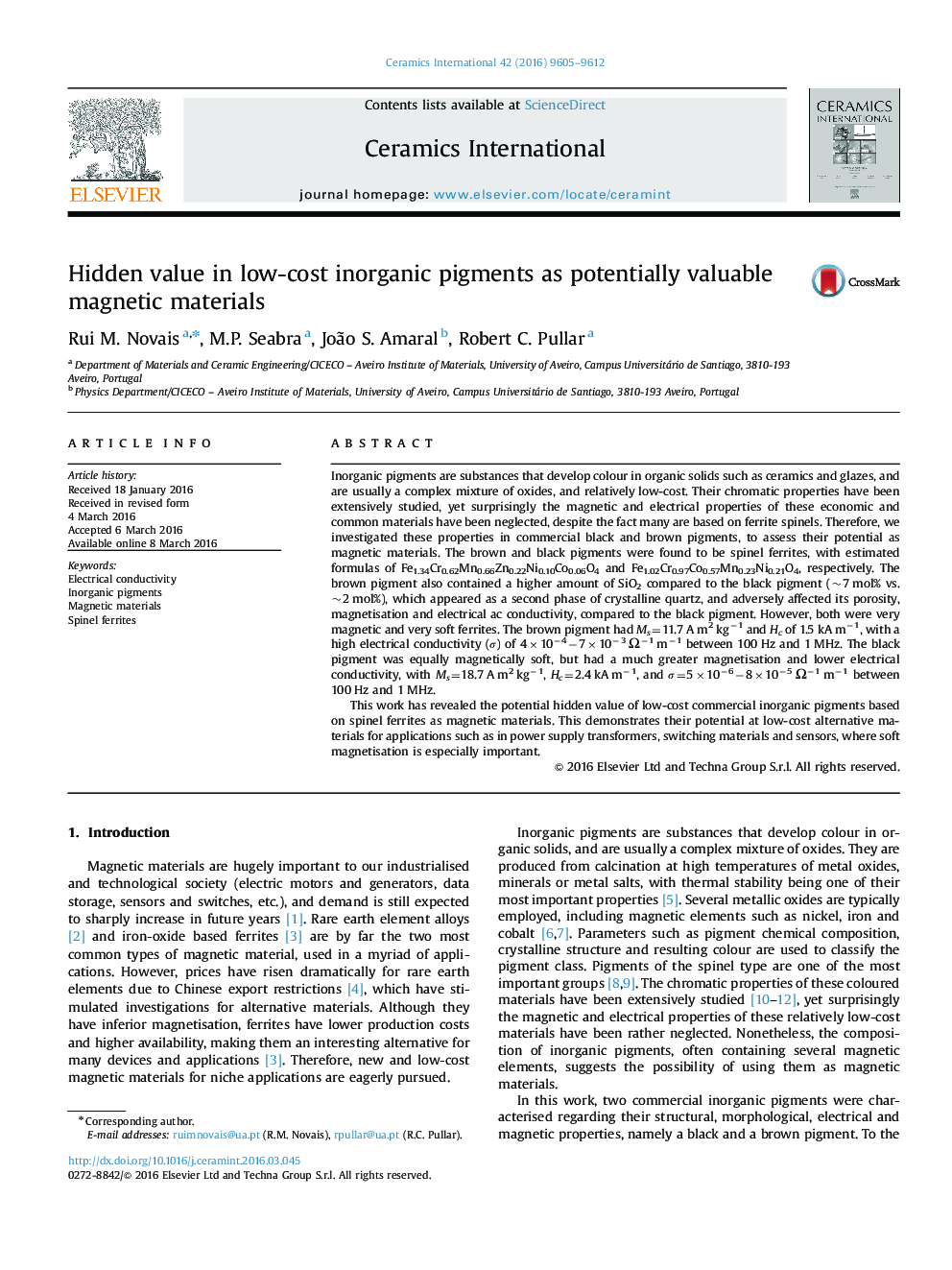| کد مقاله | کد نشریه | سال انتشار | مقاله انگلیسی | نسخه تمام متن |
|---|---|---|---|---|
| 1459032 | 989588 | 2016 | 8 صفحه PDF | دانلود رایگان |
Inorganic pigments are substances that develop colour in organic solids such as ceramics and glazes, and are usually a complex mixture of oxides, and relatively low-cost. Their chromatic properties have been extensively studied, yet surprisingly the magnetic and electrical properties of these economic and common materials have been neglected, despite the fact many are based on ferrite spinels. Therefore, we investigated these properties in commercial black and brown pigments, to assess their potential as magnetic materials. The brown and black pigments were found to be spinel ferrites, with estimated formulas of Fe1.34Cr0.62Mn0.66Zn0.22Ni0.10Co0.06O4 and Fe1.02Cr0.97Co0.57Mn0.23Ni0.21O4, respectively. The brown pigment also contained a higher amount of SiO2 compared to the black pigment (~7 mol% vs. ~2 mol%), which appeared as a second phase of crystalline quartz, and adversely affected its porosity, magnetisation and electrical ac conductivity, compared to the black pigment. However, both were very magnetic and very soft ferrites. The brown pigment had Ms=11.7 A m2 kg−1 and Hc of 1.5 kA m−1, with a high electrical conductivity (σ) of 4×10−4−7×10−3 Ω−1 m−1 between 100 Hz and 1 MHz. The black pigment was equally magnetically soft, but had a much greater magnetisation and lower electrical conductivity, with Ms=18.7 A m2 kg−1, Hc=2.4 kA m−1, and σ=5×10−6−8×10−5 Ω−1 m−1 between 100 Hz and 1 MHz.This work has revealed the potential hidden value of low-cost commercial inorganic pigments based on spinel ferrites as magnetic materials. This demonstrates their potential at low-cost alternative materials for applications such as in power supply transformers, switching materials and sensors, where soft magnetisation is especially important.
Journal: Ceramics International - Volume 42, Issue 8, June 2016, Pages 9605–9612
